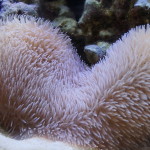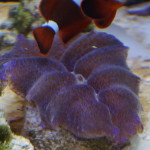We are using and trialing “Zeovit” lately here and we think this might be a great thing for our dream tank. Questions have arised as to what are the zeolites and here is what we have learned via “ZEOCEM.com”
“Zeolite is a natural mineral with exceptional physical properties resulting from its special crystalline structure. Over millions of years, there has been exposure to high temperatures and pressure on layers of volcanic ash that established the physical and chemical change, which created a diverse group of zeolites, including the Clinoptilolite.
During the development of the earth, nature has left us a precious gift – clinoptilolite. It is a natural mineral with exceptional physical properties resulting from its special crystal structure.
Over millions of years, the layers of volcanic ash were exposed to high temperatures and pressures and this established the physical and chemical change which created a diverse group of zeolites, including the clinoptilolite. Clinoptilolite belongs to a large zeolite group called heulandite.
Structure
The structure of clinoptilolite consists of three-dimensional grid which consists of Silicate tetrahedrite (SiO4) 4 – each interconnected via oxygen atoms; the atoms of silicon is replaced by aluminum (AlO4) 5-way, creating a characteristic spatial structure with a significant incidence of cavities, interconnected by channels, in which metal cations, or water molecules are stored. The total volume of these cavities is 24 to 32%.
Applications
Clinoptilolite is widely used in agriculture, livestock farming, construction, environmental protection, cleaning water and gases and in various industrial uses.
Clinoptilolite can capture the substance of solid, liquid and gas phase in its large internal adsorption surface. The dimensions of the channels are large enough to enable molecule as big as few tenth of a nanometer scale to penetrate, while small enough not to capture large complex molecules such as amino acids, vitamins and other biological macromolecules. The Grid of clinoptilolite acts as a selective adsorbtion sieve that some molecules escaped and others not. Extensive possibilities of zeolites are mainly due to the
specific physicochemical properties:
● high ion exchange selectivity
● reversible hydration and dehydration
● high gas sorption capacity
● high termostability
● resistance to aggressive media
Reversible hydration and dehydration – one of the steps in the processing clinoptilolite in the plant ZEOCEM, a.s. Bystré is drying at 400 oC. During drying it comes to the removal of free and bound water from the crystal grid, which is then counterbalanced back in contact with materials such as stored grain and feed, pet litter, in flue gas to prevent condensation and the like. Clinoptilolite stabilize moisture at a low dose of volume and avoid the adverse effects of water.
ion exchange – grid structure allows clinoptilolite to operate as Ion exchanger and as a selective adsorbent. Adsorbtion and exchange of ions depends on their charge and size. The more the size of the ion matches the size of the entering grid of clinoptilolite, the easier it will be captured and kept. Entry pore diameter is approximately 4 angstrom, which corresponds to the average ammonium ions NH4 +, H2O, Cs134 and Cs137.  These compounds exhibit the greatest affinity to bind to clinoptilolite, which operates as a selective adsorbent for a wide range of pollutants.
These compounds exhibit the greatest affinity to bind to clinoptilolite, which operates as a selective adsorbent for a wide range of pollutants.
adsorbtion – clinoptilolite adsorbes:
-Ammonia
-Heavy metals
-Radionuclides
-Odor gases
-water
This info is all available to see at the site below, this is great info to start to use to understand hte zeolites and how they work in such a cool system like ours, http://www.zeocem.com/images/stories/download/Zeocem_GB.pdf



 You Tube
You Tube